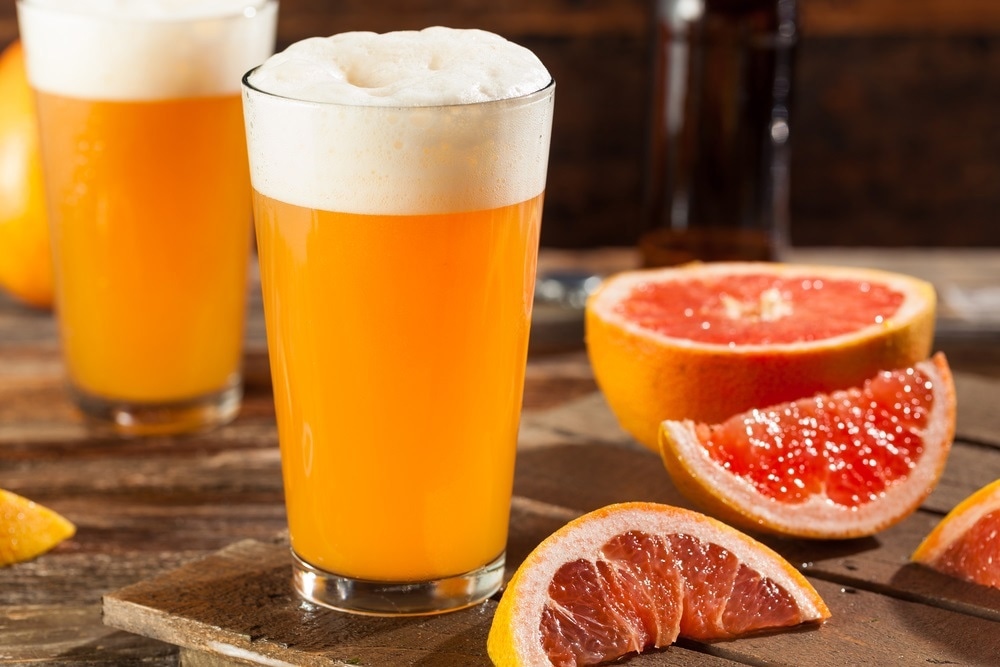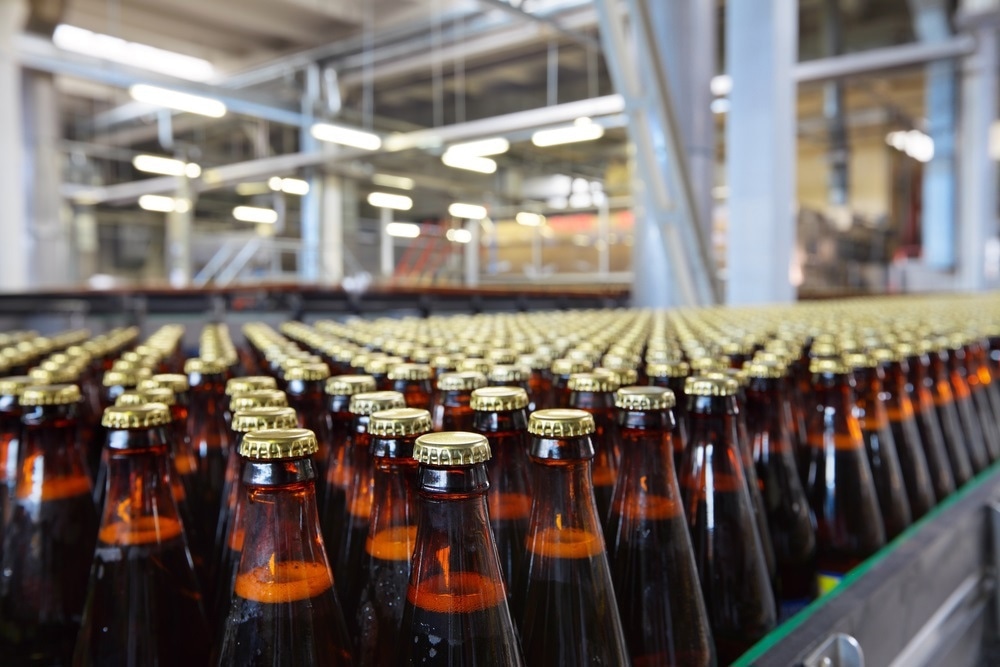Sponsored Content by PittconJan 23 2020
Beer consists primarily of four ingredients; water, malted grain, hops, and yeast. Yet, the analysis of beer and the brewing process has changed dramatically over the last decade.
In this interview, Christopher Welch from the Indiana Consortium for Analytical Science and Engineering (ICASE) talks to News-Medical Life Sciences about the new and improving developments in the analytical chemistry of beer and brewing analysis.
In the last 20-30 years, we have seen a revolution in the brewing industry worldwide. How has the analysis of beer and precursors in the brewing industry evolved over the last two-three decades? What has changed when it comes to the analysis of beer?
The biggest changes have been the emergence of the craft beer industry and a dramatic surge in the popularity of home brewing. These changes have been paralleled by important advances in analytical chemistry, especially the development of instrumentation to allow analysis outside of conventional laboratories by non-experts.
Beer analysis has always been a high-tech enterprise inside the laboratories of the large industrial brewers, however in the past homebrewers and smaller craft brewers relied mostly on old-school measurement tools such as thermometers, hydrometers, balances, and buckets.
Over the past few years, I’ve been collaborating with Professor Bruce Hamper, from the University of Missouri at St. Louis, on applying state of the art HPLC-MS technologies to beer and brewing analysis. Bruce teaches a class on beer and brewing and notes that beermaking provides these students with an excellent introduction to complex measurement science and fundamental scientific principles. We have noted a growing interest in this subject and thought it would be a fun topic for a Pittcon symposium and beer-tasting event, bringing together experts from large and small breweries with homebrewers, educators teaching classes on beer and brewing as well as just plain old beer lovers.

Image Credit:Shutterstock/id-art
Why is the analysis of the brewing process critical?
We think it comes down to what Henry Ford said about automobile manufacturing, “You can’t improve what you can’t measure”. Over the past few millennia, we humans have done a remarkable job using our existing senses to develop amazing beers, but many factors are contributing to success or failure that are just not that easy for us to taste, smell, see or feel. Obtaining consistency in the brewing process is a challenge for both large and small brewers.
There is a significant amount of time between the initial brewing of malted grains and the packaging of the final product. Monitoring the profile of ingredients and changes during the brewing process is critical for obtaining a consistent product. Modern analytical technologies can shed light on these situations. We will share several excellent case studies profiled in our upcoming symposium at Pittcon 2020.
How has the emergence of the new craft brewery phenomenon impacted beer and brewing analysis?
First, there are now many more producers making a staggering variety of different products. The small size and limited scale of some of these manufacturers means that there is a growing interest in performing analysis of beer and brewing using less costly analytical instrumentation that does not require a high degree of expertise to operate. We think this is one of the most exciting aspects of the current field and an area where Pittcon participants may be able to lend a hand in figuring out next-generation tools for beer analysis.
In a recent study, Bruce and I and a group of friends sample more than 75 different beers from around the world, including many standard lagers, porters and stouts, but also several of the hop-heavy ales that craft beer makers have been producing in recent years.
In addition to tasting, we analyzed the samples for levels of the hops-derived humulones and isohumulones using a high throughput MISER HPLC-MS method that we have developed. Interestingly, we were able to analyze all the samples in about an hour with the results showing a remarkable window into the flavor profile created by these two hops-derived compounds; the humulones correlated with a resinous, ‘hoppy’ flavor and fragrance, while the iso humulones provided the characteristic bitter taste favored in classical lager and bitter beers.
There are only four basic ingredients in beer; water, malted grain, hops, and yeast. However, over the last decade, a new trend has surfaced of modern craft beers which expanded the ingredient list to include a wide range of fruits vegetables and spices. With the inclusion of these new ingredients, how has the analytical process behind beer analysis and the brewing process changed?
So far, we have not investigated these other flavorings, but with modern craft beers containing everything from hot peppers to espresso, pumpkin, and grapefruit, there are ample opportunities for expanding analytical testing to analyze these specific compounds arising from these sources. Some of the speakers in our upcoming Pittcon session this year represent craft-brewers who manufacture such beers, and they will be able to shed additional light on this topic.

Image Credit:Shutterstock/BrentHofacker
How do you help brewers remain consistent in the quality of the final product? Why is this important?
We are lucky to have as a speaker in our session this year at Pittcon, a brewmaster from one of the biggest beer manufacturers in the world, INBEV- Anheuser Busch. In 2017 INBEV-AB produced 612 million hectoliters of beer; roughly 31% of all beer produced globally. We will see what they have to say on this important question of quality control, batch to batch reproducibility and maintaining product flavor standards from year to year.
Can you tell us about the recent development in analytical chemistry that have been employed to monitor the brewing process and quality of beer?
Modern chromatography is playing an increasingly important role in monitoring the brewing process and product quality. The American Society of Brewing Chemists (ASBC) regularly updates methods of analysis for the brewing industry. These are the ‘Standard Operating Procedures’ for the industry and have included more emphasis on HPLC, GC, and MS in recent years. We will hear more about these developments in our symposium, but we are also interested in learning what emerging analytical technologies for inexpensive, on the spot analysis, could be employed in beer and brewing analysis.

Image Credit:Shutterstock/ID1974
What do you hope to gain from attending Pittcon 2020 and discussing your research?
We think this is a fascinating topic and a great opportunity to bring researchers together from across the entire spectrum of beer and brewing science – from large industrial breweries to craft breweries, homebrewers, and teachers of brewing courses.
We are hoping that this event will stimulate some new collaborations and research opportunities, perhaps furthering opportunities for new handheld devices and sensor technologies to be used in the analysis of one of our very favorite substances – beer.
Where can our readers go to find out more?
I would encourage readers to attend the “Analytical Chemistry of Beer and Brewing” symposium to be held at Pittcon 2020 in Chicago on Wednesday, March 4th, 2020. The afternoon symposium will consist of five speakers from major breweries, academia, craft breweries and is followed by a beer tasting event.
We have also recently published a method for high throughput analysis of hops derived compounds in beer: Rapid Determination of Humulones and Isohumulones in Beers Using MISER LC-MS Analysis, Bruce C. Hamper, Kerstin Zawatzky, Vivian Zhang, Christopher J. Welch, J. Amer. Soc. Brew. Chem. 75 , 333-338, 2017.

About Chris Welch
Christopher J. Welch retired from a career in the pharmaceutical industry in 2017 and is now the Executive Director of the Indiana Consortium for Analytical Chemistry and Engineering (ICASE), an Indianapolis-based joint venture between Purdue, Notre Dame and Indiana University that explores industry-university collaborations on critical issues relating to measurement science. ([email protected])
Bruce C. Hamper is an Assistant Teaching Professor at the University of Missouri at St. Louis, where he teaches several classes in addition to the Chemistry of Beer and Brewing course highlighted here. ([email protected])
About Pittcon
 Pittcon® is a registered trademark of The Pittsburgh Conference on Analytical Chemistry and Applied Spectroscopy, a Pennsylvania non-profit organization. Co-sponsored by the Spectroscopy Society of Pittsburgh and the Society for Analytical Chemists of Pittsburgh, Pittcon is the premier annual conference and exposition on laboratory science.
Pittcon® is a registered trademark of The Pittsburgh Conference on Analytical Chemistry and Applied Spectroscopy, a Pennsylvania non-profit organization. Co-sponsored by the Spectroscopy Society of Pittsburgh and the Society for Analytical Chemists of Pittsburgh, Pittcon is the premier annual conference and exposition on laboratory science.
Proceeds from Pittcon fund science education and outreach at all levels, kindergarten through adult. Pittcon donates more than a million dollars a year to provide financial and administrative support for various science outreach activities including science equipment grants, research grants, scholarships and internships for students, awards to teachers and professors, and grants to public science centers, libraries and museums.
Visit pittcon.org for more information.